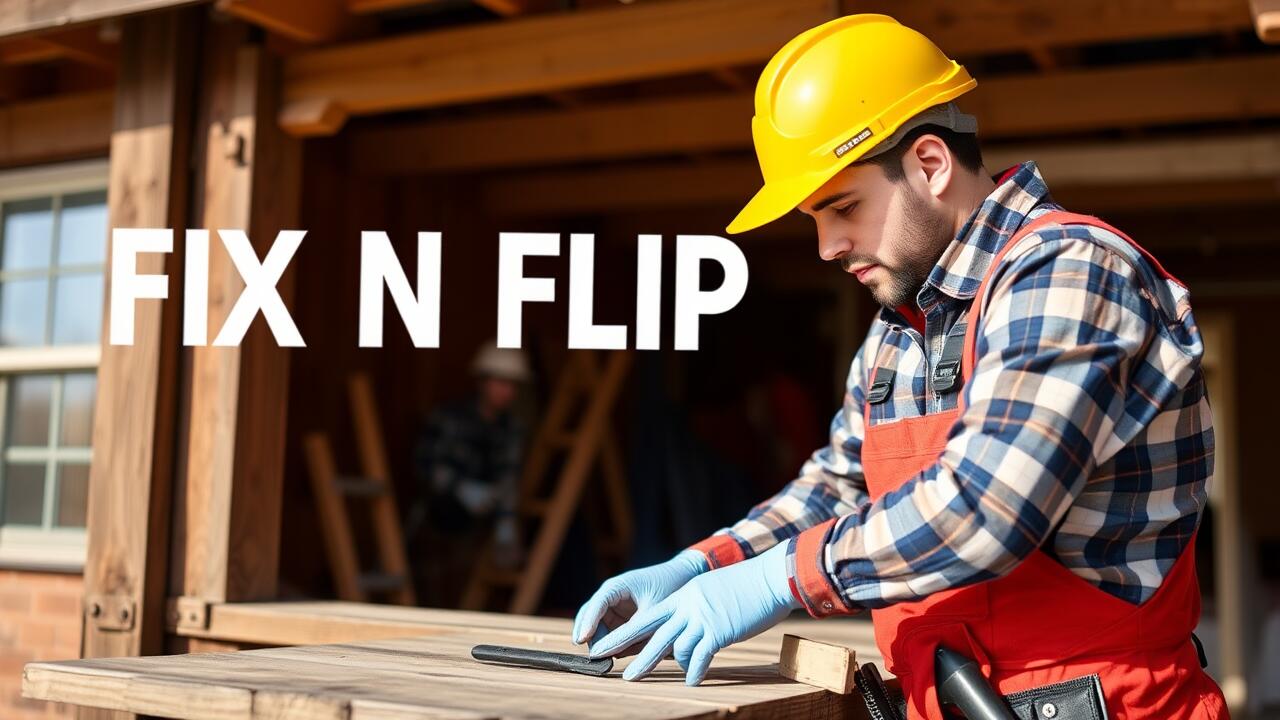
Table Of Contents
Evaluating Your Credit and Financial Situation
When considering a fix and flip project, it's crucial to evaluate your credit and financial situation. Lenders often use credit scores as a primary factor in determining loan eligibility for fix n flip loans. A higher credit score can improve your chances of securing favorable terms. Understanding your current financial standing, including income, debts, and assets, will provide a clearer picture of how much you can afford to borrow.
Once you have an idea of your creditworthiness, you can start preparing for the loan application process. This involves gathering necessary financial documents and understanding any financial obligations you have. The more organized and informed you are about your financial situation, the better prepared you will be to approach lenders interested in offering fix n flip loans.
Importance of Credit Scores in Loan Approval
Credit scores play a crucial role in the approval process for various types of loans, including Fix n Flip Loans. Lenders typically rely on credit scores to assess the risk associated with borrowing. A higher credit score often leads to more favorable lending terms, such as lower interest rates or decreased fees. This can be particularly advantageous for real estate investors looking to maximize their profits while minimizing their initial costs.
When applying for Fix n Flip Loans, the importance of a good credit score can't be overstated. Lenders will not only review the score itself but also consider the credit history that accompanies it. Factors such as payment history, outstanding debt, and the length of credit accounts all contribute to the overall assessment. A solid credit profile can enhance the likelihood of securing the necessary funding for a successful property flip.
How to Calculate the Costs of a Fix and Flip
Understanding the costs involved in a fix and flip project is crucial for financial success. Start by assessing the purchase price of the property. This figure is foundational as it determines how much of your budget is available for renovations and other expenses. Next, estimate the renovation costs by obtaining quotes from contractors or using cost estimation tools. Remember to account for potential overruns since unexpected repairs can arise during the renovation process. Holding costs, such as property taxes, insurance, and utilities, should also be included in your calculations.
When evaluating your total investment, it's essential to tally all these expenses to refine your financial strategy. Fix n Flip Loans are often structured to cover both the purchase and renovation costs, but lenders will want to see a detailed budget that outlines your plan. A well-prepared cost estimate can facilitate the loan approval process and ensure that you have sufficient funds to complete the project without facing financial strain mid-renovation.
Estimating Renovation and Holding Costs
Accurately estimating renovation and holding costs is essential for anyone looking to maximize profits from a fix and flip project. Renovation costs should encompass all necessary repairs, upgrades, and potential unforeseen expenses. It's crucial to develop a detailed budget that reflects labor, materials, permits, and contingencies for overruns. Evaluating similar projects in the area can provide insights into what to expect and help create a more realistic financial plan.
Holding costs represent the expenses incurred while the property is on the market but not yet sold. These costs include mortgage payments, property taxes, insurance, utilities, and maintenance. Properly assessing these expenses ensures investors do not overlook crucial financial responsibilities that could erode profits. Understanding both renovation and holding costs is vital for determining the feasibility of using Fix n Flip Loans to finance the project effectively.
The Application Process for Fix and Flip Loans
The application process for Fix n Flip Loans involves several key steps to ensure a smooth financing experience. Initially, potential borrowers need to gather relevant documentation that showcases their financial health. This typically includes tax returns, bank statements, proof of income, and details about the property being purchased and renovated. Lenders will closely review these documents to assess the borrower’s ability to repay the loan while also evaluating the potential profitability of the property.
Once the necessary documents are prepared, borrowers can submit their applications through the lender's specified channels, whether online or in person. After submission, the lender conducts an underwriting process, which involves assessing the property’s value, renovation plans, and the applicant's creditworthiness. Communication may occur back and forth during this time as the lender may require additional information or clarification. A thorough due diligence process helps ensure that funds are allocated to projects that demonstrate a solid return on investment.
Key Documents Required
When applying for Fix n Flip Loans, you will need to gather several key documents to ensure a smooth application process. These typically include proof of identity and residency, such as a driver’s license or utility bill. Additionally, lenders often request documentation of your income, which might consist of pay stubs, bank statements, or tax returns from the past two years. A comprehensive list of your assets and liabilities will also be necessary to demonstrate your overall financial health.
Furthermore, a detailed project proposal is crucial in the application process. This should outline your intended renovations, as well as a realistic budget and timeline for the project. Lenders may also require recent property value assessments or appraisals to understand the potential return on investment. Having these documents prepared can significantly increase your chances of securing the desired funding for your fix and flip project.
FAQS
What types of loans are available for fix and flip projects?
There are several types of loans available for fix and flip projects, including hard money loans, traditional mortgages, bridge loans, and lines of credit. Each type has its own terms and suitability depending on the borrower's needs and financial situation.
How does my credit score affect my ability to secure a fix and flip loan?
Your credit score plays a significant role in loan approval. Lenders typically assess your creditworthiness to determine interest rates and loan terms. A higher credit score may lead to better loan options, while a lower score may limit your choices.
What costs should I consider when calculating the total investment for a fix and flip?
When calculating costs, you should consider renovation costs, holding costs (such as property taxes and utilities), acquisition costs (purchase price and closing costs), and selling costs (real estate agent fees and closing costs on sale).
What key documents do I need to prepare for a fix and flip loan application?
Key documents typically include proof of income, a detailed business plan outlining your fix and flip strategy, property appraisal, budget estimates for renovations, and your credit report.
Can I use a fix and flip loan for properties that need minimal renovations?
Yes, you can use a fix and flip loan for properties that require minimal renovations. However, lenders may still require a thorough evaluation of the property and your renovation plan to determine the viability of the project.



